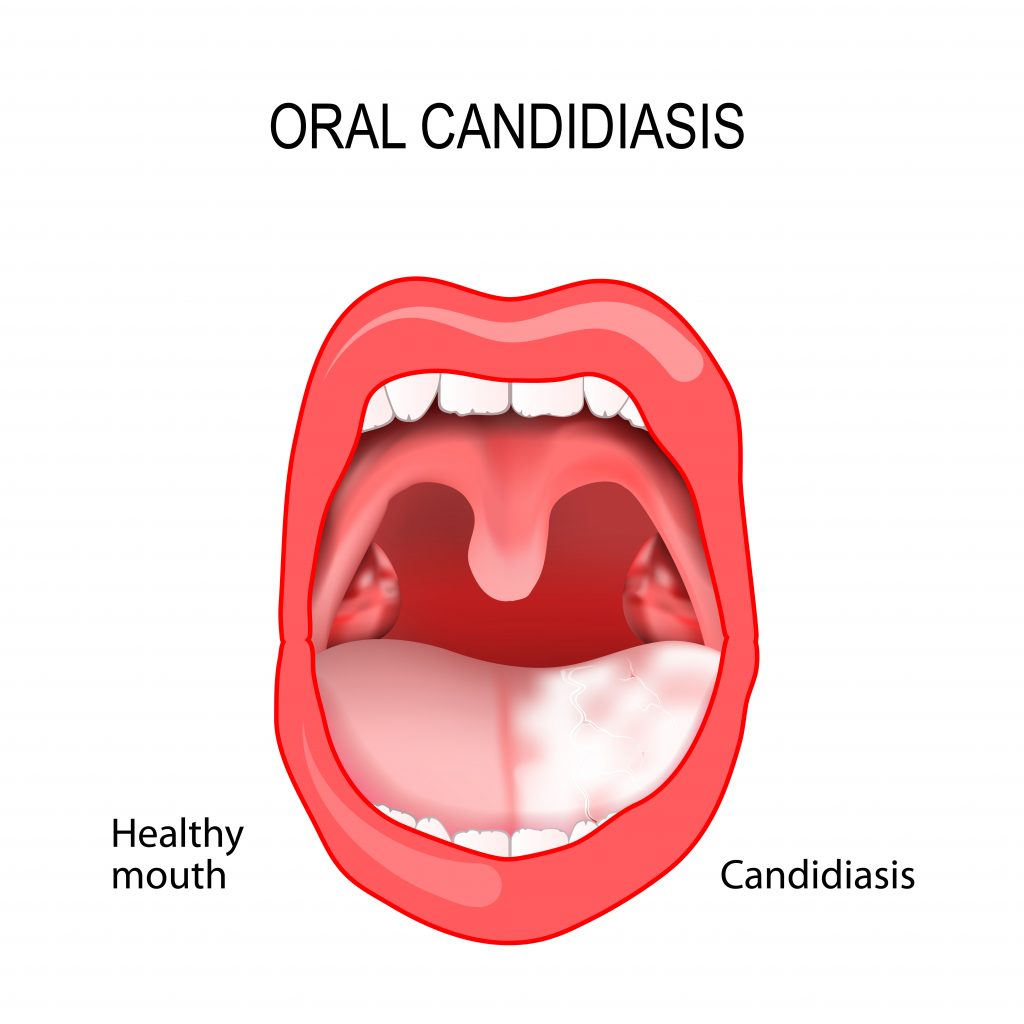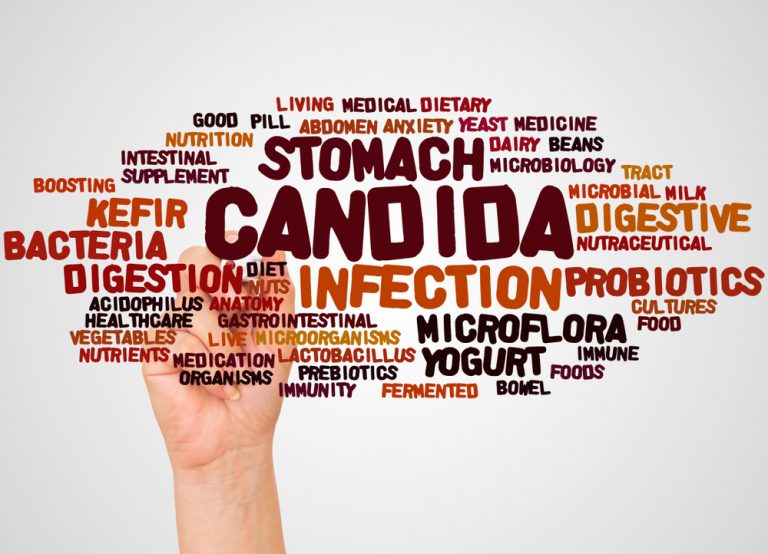The most common cause of mycosis and yeast of the body are Candida fungi. The presence of a certain amount of yeasts in the large intestine is a normal state, but their extensive hypertrophy is a disease state and may even lead to systemic mycosis.
How does Candida infection manifest itself?
The growth of Candida yeasts can cause
- nail infection
- white spots in the mouth, skin problems, dandruff
- headaches and fatigue, fluctuating blood sugar levels
- food intolerances, bloating and gases, constipation or diarrhoea

People, with diabetes, weakened immunity, often treated with antibiotics, living under long-term stress and fatigue are more exposed to candidiasis and mycosis. It is these patients who are most frequently affected by skin mycosis, oral mycosis, oesophagal mycosis and other types of fungal infections. A very common cause of yeast hypertrophy is an improper diet based on highly processed, ready-made meals, sweets, poor in fibre and vegetables.
Candida fungus - a diet for candidosis
Diet for Candida infection is an individual issue and depends largely on the degree of microflora imbalance. However, it is always based on the exclusion of food products that are the best medium for fungal growth.
The purpose of the antifungal diet is to get rid of fungi from the body, support the immune system and restore the balance of the microflora. Dysbiosis usually involves not only mycosis of the gastrointestinal tract, but also other systems, and is manifested by frequently recurring vaginal infections. In the case of people with a disorder of bacterial flora and slight hypertrophy of Candida, a strict antifungal diet should last 1-3 months.
Products recommended in a diet for mycosis
- vegetables – every vegetable can be included except boiled carrots, green peas and potatoes; onions and garlic, which have a fungicidal effect, are particularly recommended
- fruits - only lemons and grapefruits in the first phase of the diet; then sour fruit, e.g. apples, kiwi
- dairy products - sheep's or goat's milk, kefir, natural yoghurt with probiotic bacteria
- sources of complex carbohydrates - buckwheat groats, brown rice
- meat - poultry, beef
Antifungal diet - what not to eat with mycosis?
Avoiding some types of products can greatly speed up the treatment of Candida infection. The diet should include the elimination of foods that promote the proliferation of pathogenic microbes. Products contraindicated in the antifungal diet are:
- sweets and all products containing sugar
- fruits – with high simple sugar content, e.g. bananas, grapes, oranges, mandarins, peaches, apricots, plums, pears
- white flour products - bread, pasta, dumplings
- yeast - all products containing yeast (e.g. confectionery), yeast extract (e.g. spice mixes, soups powder), made with the use of yeast (e.g. beer)
- alcohol - wine, beer, liqueurs
Body mycosis - what to eat for the symptoms of mycosis?
In the case of yeast hypertrophy, natural products with a fungicidal effect are recommended. The following could be helpful:
- Burdock root
- barberry
- grapefruit seed extract
- ginseng root
It is very important to support the detoxification of the liver because killing fungi that are in the body causes the release of substances harmful to humans. In the initial phase of the antifungal diet, headaches, skin problems or heavy sweating may occur.
Important elements of the antifungal diet are also omega-3 fatty acids, which have an anti-inflammatory effect. They are found, among others, in linseed oil and fatty sea fishes. High-quality omega-3 supplements are also recommended.
In order to achieve a better effect of treatment, probiotic therapy is necessary, which will help to restore the balance of the disturbed microbiome and rebuild the population of good bacteria. It is best to use high-quality probiotics with scientifically proven effects.






